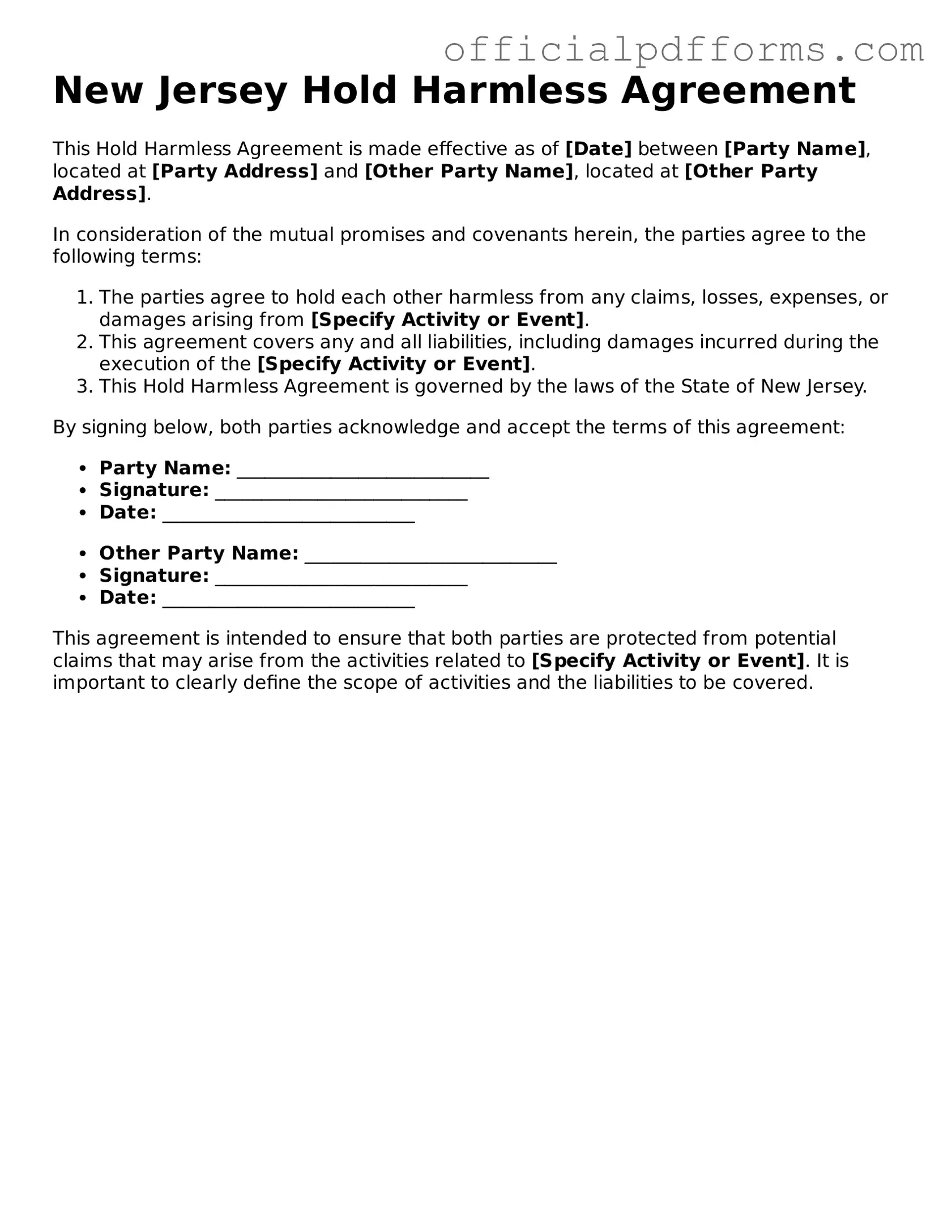What is a Hold Harmless Agreement in New Jersey?
A Hold Harmless Agreement is a legal document that protects one party from liability for certain actions or events. In New Jersey, this agreement is often used in various contexts, such as construction projects, rental agreements, and events. By signing this document, one party agrees not to hold the other party responsible for damages or injuries that may occur during the specified activity or agreement period.
Who typically uses a Hold Harmless Agreement?
Various individuals and organizations utilize Hold Harmless Agreements, including:
-
Property owners renting out their space
-
Contractors and subcontractors in construction projects
-
Event organizers hosting public or private events
-
Businesses engaging in partnerships or collaborations
These agreements help manage risk and clarify responsibilities among the involved parties.
What are the key components of a Hold Harmless Agreement?
A well-drafted Hold Harmless Agreement typically includes the following components:
-
Parties Involved:
Clearly identify who is entering into the agreement.
-
Scope of Agreement:
Specify the activities or events covered by the agreement.
-
Liability Waiver:
Outline the extent to which one party is protected from claims or damages.
-
Indemnification Clause:
Detail how one party will compensate the other for losses incurred.
-
Governing Law:
State that New Jersey law will govern the agreement.
Is a Hold Harmless Agreement legally binding?
Yes, a Hold Harmless Agreement can be legally binding if it meets certain criteria. For it to be enforceable, the agreement must be clear, voluntary, and signed by all parties involved. Additionally, it should not violate public policy or state laws. It’s always advisable to consult with a legal professional to ensure that the agreement complies with local regulations.
Can a Hold Harmless Agreement be modified or revoked?
Yes, Hold Harmless Agreements can be modified or revoked, but this typically requires mutual consent from all parties involved. Changes should be documented in writing and signed by all parties to ensure clarity and enforceability. Revoking the agreement may also require a formal process, depending on the terms set forth in the original document.
What should I consider before signing a Hold Harmless Agreement?
Before signing a Hold Harmless Agreement, consider the following:
-
Understand the scope of the agreement and what liabilities you are waiving.
-
Assess the risks involved in the activity or event.
-
Evaluate whether the agreement is fair and reasonable.
-
Consult with a legal professional if you have any concerns or questions.
Hold Harmless Agreement forms can be obtained from various sources, including:
-
Legal websites offering templates
-
Local government offices
-
Law firms specializing in contract law
-
Professional organizations related to your industry
Ensure that any form you use is tailored to comply with New Jersey laws and meets your specific needs.
